
The Aerobee rocket was one of the United States' most produced and productive sounding rockets. Developed by the Aerojet Corporation, the Aerobee was designed to combine the altitude and launching capability of the V-2 with the cost effectiveness and mass production of the WAC Corporal. More than 1000 Aerobees were launched between 1947 and 1985, returning vast amounts of astronomical, physical, aeronomical, and biomedical data.
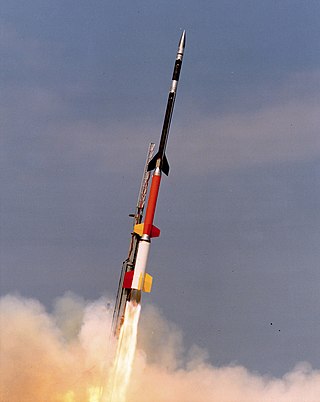
A sounding rocket or rocketsonde, sometimes called a research rocket or a suborbital rocket, is an instrument-carrying rocket designed to take measurements and perform scientific experiments during its sub-orbital flight. The rockets are used to launch instruments from 48 to 145 km above the surface of the Earth, the altitude generally between weather balloons and satellites; the maximum altitude for balloons is about 40 km and the minimum for satellites is approximately 121 km. Certain sounding rockets have an apogee between 1,000 and 1,500 km, such as the Black Brant X and XII, which is the maximum apogee of their class. For certain purposes Sounding Rockets may be flown to altitudes as high as 3,000 kilometers to allow observing times of around 40 minutes to provide geophysical observations of the magnetosphere, ionosphere, thermosphere and mesosphere. Sounding rockets have been used for the examination of atmospheric nuclear tests by revealing the passage of the shock wave through the atmosphere. In more recent times Sounding Rockets have been used for other nuclear weapons research. Sounding rockets often use military surplus rocket motors. NASA routinely flies the Terrier Mk 70 boosted Improved Orion, lifting 270–450-kg (600–1,000-pound) payloads into the exoatmospheric region between 97 and 201 km.
Orión was the designation of a sounding rocket family of Argentina, which was launched between 1965 and 1971 at CELPA, CELPA, Tartagal and Wallops Island.

Orion is the designation of a small American sounding rocket. The Orion has a length of 5.60 meters, a diameter of 0.35 m, a launch weight of 400 kg, a launch thrust of 7 kN and a ceiling of 85 kilometers. The Orion, built by NASA Goddard Space Flight Center's Wallops Flight Facility, is also used as an upper stage of sounding rockets, usually paired with a Terrier missile as the first stage, although Nike, Taurus and VS-30 rockets are also used.

The Dragon is a two-stage French solid propellant sounding rocket used for high altitude research between 1962 and 1973. It belonged thereby to a family of solid-propellant rockets derived from the Bélier, including the Centaure, the Dauphin and the Éridan.
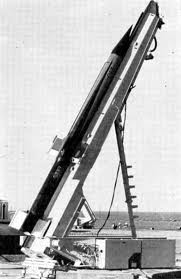
Centaure was a two-stage French sounding rocket consisting of a Venus first stage and a Belier second stage. It belongs to a family of solid-propellant rockets consisting of the Belier, Centaure, Dragon, Dauphin, and Eridan.
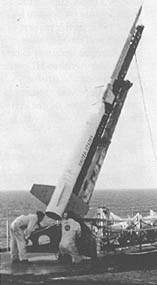
The Nike Apache, also known as Argo B-13, was a two-stage sounding rocket developed by Aerolab, later Atlantic Research, for use by the United States Air Force and NASA. It became the standard NASA sounding rocket and was launched over 600 times between 1961 and 1978.
Astrobee is the designation of series of American sounding rockets with one to three stages.
Hopi-Dart was an American sounding rocket used by the NASA Marshall Space Flight Center for aeronomy studies in the early 1960s.
Nike Hydac is the designation of an American sounding rocket with two stages, based upon the Nike Ajax booster. The Nike Hydac was launched 87 times from many missile sites. Such sites were White Sands Missile Range, Poker Flat Research Range, Kwajalein Missile Range, Cassino Site - Rio Grande Airport, Brazil, and from North Truro Air Force Station in Massachusetts during Operation Have Horn in 1969.

Malemute is the designation of an American sounding rocket family. The original Malemute had a maximum flight altitude of 165 km, a liftoff thrust of 57.00 kN, a total mass of 100 kg, a diameter of 0.41 m and a total length of 2.40 m. It was a single stage vehicle powered by a Thiokol Malemute TU-758 engine, operated by Sandia National Laboratories (SNL).
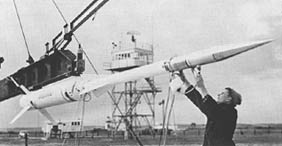
Nike Asp was an American sounding rocket. The Nike Asp has a ceiling of 220 km, a takeoff thrust of 217 kN, a takeoff weight of 700 kg, a diameter of 0.42 m and a length of 7.90 m.
The Nike-Cajun was a two-stage sounding rocket built by combining a Nike base stage with a Cajun upper stage. The Nike-Cajun was known as a CAN for Cajun And Nike. The Cajun was developed from the Deacon rocket. It retained the external size, shape and configuration of the Deacon but had 36 percent greater impulse than the Deacon due to improved propellant. It was launched 714 times between 1956 and 1976 and was the most frequently used sounding rocket of the western world. The Nike Cajun had a launch weight of 698 kg (1538 lb), a payload of 23 kg (51 lb), a launch thrust of 246 kN (55,300 lbf) and a maximum altitude of 120 km (394,000 ft). It had a diameter of 42 cm and a length of 7.70 m. The maximum speed of the Nike-Cajun was 6,760 km/h.

Spaceflight as a practical endeavor began during World War II with the development of operational liquid-fueled rockets. Beginning life as a weapon, the V-2 was pressed into peaceful service after the war at the United States' White Sands Missile Range as well as the Soviet Union's Kapustin Yar. This led to a flourishing of missile designs setting the stage for the exploration of space. The small American WAC Corporal rocket was evolved into the Aerobee, a much more powerful sounding rocket. Exploration of space began in earnest in 1947 with the flight of the first Aerobee, 46 of which had flown by the end of 1950. These and other rockets, both Soviet and American, returned the first direct data on air density, temperature, charged particles and magnetic fields in the Earth's upper atmosphere.
Rehbar is a series of sounding rockets launched into the upper atmosphere by Pakistan's Space and Upper Atmosphere Research Commission (SUPARCO). Rehbar-I was the first rocket launched by SUPARCO, on 7 June 1962. Rehbar-I was a two-staged solid fuel rocket.

The RM-90 Blue Scout II was an American sounding rocket and expendable launch system which was flown three times during 1961. It was a member of the Scout family of rockets. Blue Scout II was a military version of the NASA-operated Scout X-1, with adjustments to the payload fairings, engine nozzles and fins.
The Cajun was an American sounding rocket developed during the 1950s. It was extensively used for scientific experiments by NASA and the United States military between 1956 and 1976.
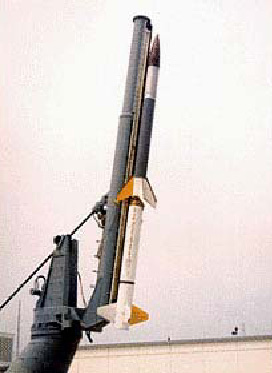
The Terrier Malemute is a two-stage American sounding rocket typically used for smaller payloads. Both the Terrier first stage and the Malemute second stage use solid propellant. The Terrier burns for approximately 5.2 seconds, and the Malemute burns for approximately 21.5 seconds. The first stage booster consists of a surplus Navy Terrier MK 12 Mod 1 rocket motor with four 0.22 m2 (340 sq in) fin panels arranged in a cruciform configuration. The Terrier rocket booster has a diameter of 460 mm (18 in). The second stage solid rocket is a Thiokol Malemute TU-758 rocket motor, specially designed for high altitude research rocket applications. Apogee is approximately 400 km (220 nmi) for a 230 kg (510 lb) payload or 700 km (380 nmi) for a 41 kg (90 lb) payload. For a payload weight of 200 lb (91 kg), the acceleration during the boost phase is 26 g. Its first flight was on November 11, 1974, from Barking Sands. Other launch sites have included Poker Flat, Wallops Island and Fort Yukon, Alaska.
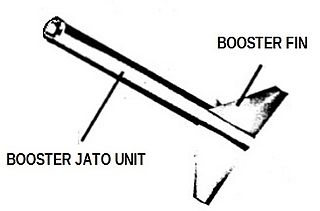
The Nike stage or Nike booster, a solid fuel rocket motor, was developed by Hercules Aerospace for use as the first stage of the Nike Ajax and Nike Hercules missiles as part of Project Nike.













